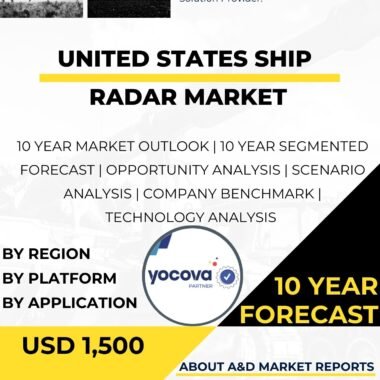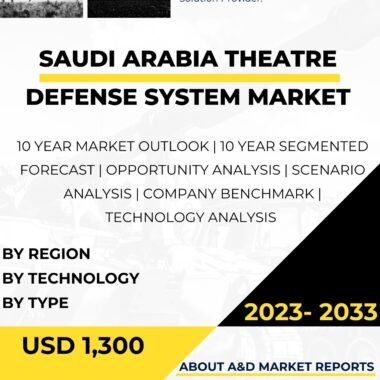Description
The United States military relies on a wide range of advanced sensors to gather critical data, enhance situational awareness, and support mission-critical operations across various domains. These sensors play a vital role in providing real-time information, intelligence, and target data to military personnel, commanders, and decision-makers, enabling them to make informed decisions and maintain an edge in modern warfare.
In the air domain, military aircraft are equipped with a diverse array of sensors, each serving specific purposes. Radar systems are essential for detecting and tracking aircraft, missiles, and other objects in the sky and on the ground. These radar systems use electromagnetic waves to bounce signals off targets and measure the return signals to determine the target’s location, speed, and direction.
In addition to radar, military aircraft use electronic warfare (EW) sensors to detect and counter enemy radar and communication signals. EW sensors help aircraft avoid detection and stay protected in contested environments. Furthermore, electro-optical and infrared (EO/IR) sensors provide visual and thermal imaging capabilities, allowing for day and night surveillance, target identification, and reconnaissance.
The Global Positioning System (GPS) is a critical sensor used across military platforms to provide accurate positioning, navigation, and timing data. GPS enables military forces to conduct precise maneuvers, maintain accurate timing for synchronized operations, and perform effective targeting.
In the maritime domain, naval vessels and submarines are equipped with various sensors to navigate, detect threats, and engage targets. Sonar systems, both active and passive, are used for underwater surveillance and anti-submarine warfare (ASW). Active sonar emits sound waves and listens for the echoes from underwater objects, while passive sonar listens for the sounds emitted by other vessels, submarines, or marine life.
Radar and EO/IR sensors are also employed in maritime operations to detect and track surface vessels and aerial threats. These sensors provide critical information for naval forces to maintain awareness of their surroundings and respond to potential threats.
The use of unmanned systems, such as unmanned aerial vehicles (UAVs) and unmanned underwater vehicles (UUVs), has expanded the range and effectiveness of military sensors. Unmanned systems equipped with sensors extend the military’s reach, providing real-time data and intelligence in challenging and dangerous environments.
On the ground, military forces rely on a wide range of sensors to enhance situational awareness and support ground operations. Ground-based radar systems, such as air defense radars and surveillance radars, provide early warning of incoming threats and monitor airspace for potential adversaries.
Soldiers and ground forces use a variety of sensors, including night vision devices, thermal imagers, and target acquisition systems. These sensors enable troops to operate effectively in low-light conditions, detect potential threats, and engage targets with precision.
Counter-improvised explosive device (IED) sensors are also crucial for protecting troops from hidden threats in asymmetric warfare environments. These sensors detect and neutralize explosive devices, reducing the risk to military personnel.
Intelligence, surveillance, and reconnaissance (ISR) sensors are a critical component of military operations, providing continuous monitoring and data collection capabilities. ISR sensors can be deployed on aircraft, UAVs, satellites, and ground-based platforms to gather intelligence, identify targets, and assess the battlefield environment.
Furthermore, space-based sensors play an essential role in modern military operations. Military satellites equipped with sophisticated sensors, such as infrared sensors and hyperspectral imagers, collect valuable data from space, providing global coverage and surveillance capabilities.
Space-based sensors also support missile warning systems, detecting the launch of ballistic missiles and providing early warning to military authorities. Additionally, space-based sensors contribute to space situational awareness, tracking space debris and potential threats to space assets.
The integration of artificial intelligence (AI) and machine learning into military sensors is another area of innovation. AI-powered sensors can autonomously analyze data, detect patterns, and provide actionable insights. These advanced capabilities enable faster and more efficient data processing, enhancing the military’s ability to respond to emerging threats and changing situations.
The evolution of sensor technologies is driven by ongoing research and development efforts, as well as advancements in material science, electronics, and miniaturization. Smaller, lighter, and more power-efficient sensors continue to be developed, enabling their integration into a wide range of platforms, including handheld devices and wearable technologies for dismounted soldiers.
Interoperability is a key consideration in military sensor development, as it ensures that data from different sensors can be seamlessly integrated and shared across military units and services. Common communication protocols and data formats facilitate the exchange of information, enhancing joint and coalition operations.
Despite the significant advantages provided by military sensors, there are challenges and limitations. Sensor data overload is a concern, especially with the exponential growth of data generated by various sensors. Developing effective data processing and analysis techniques is critical to make sense of vast amounts of information and provide relevant insights to decision-makers.
Sensor fusion is a field of research that seeks to combine data from multiple sensors to create a comprehensive and accurate picture of the battlefield environment. The integration of data from different sensors can lead to a more comprehensive understanding of the situation and improve overall situational awareness.
However, sensor fusion also presents challenges in terms of data integration, synchronization, and correlation. Ensuring the accuracy and reliability of fused data is essential to avoid misinformation and support effective decision-making.
Furthermore, cybersecurity is a paramount concern in military sensor development. Sensors, especially those connected to communication networks, are potential targets for cyber threats and attacks. Implementing robust cybersecurity measures is essential to safeguard sensor data, maintain operational integrity, and prevent potential disruptions to military operations.
In conclusion, United States military sensors are crucial elements of modern warfare, providing critical data and intelligence to support military operations across the air, land, sea, and space domains. From radar and EO/IR sensors to GPS and space-based sensors, the military relies on a diverse array of technologies to enhance situational awareness, improve targeting, and protect troops from potential threats. As technology continues to advance, the integration of AI, sensor fusion, and cybersecurity will shape the future of military sensors, ensuring their effectiveness and reliability in a rapidly evolving operational landscape.




